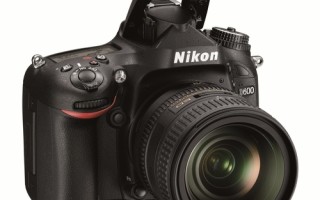Nikon D600 full frame DSLR review
Nikon D600 full frame DSLR review
Nikon announced the new full-frame DSLR camera Nikon D600, which became the smallest and most compact full-frame DSLR of all Nikon products in its entire history.
The new camera is equipped with a full-frame FX sensor (35.9 x 24 mm). Its resolution is 24.3 megapixels. The image processor is EXPEED 3. The device's light sensitivity ranges from 100 to 6400, but it can easily be expanded to ISO values of 50-25,600 units. 16-bit image processing allows you to get more saturated colors, smooth transitions in midtones and high detail.
Focusing is achieved thanks to the 39-point AF system Multi-CAM4800. Its sensitivity is not inferior to the flagship camera Nikon D4. The camera supports lenses with a combined aperture up to f/8.
The camera's video mode is based on the D800 model. This is multi-zone D-video. Full HD (1080p) can record video at frame rates of 30fps, 25fps and 24fps. 720p has a larger frame rate range. It is 60fps, 50fps and 25fps. The maximum duration of a video shot on camera is 30 minutes. You can connect an external stereo microphone and headphones to the device.
The 1080p video stream can be output to external recording devices in real time. When you connect the camera to a monitor, it automatically starts outputting the image in 1080i. Video is displayed on an external monitor without service information, which, if necessary, can be viewed on the displays of the device itself.
Turning on the camera lasts approximately 0.13 seconds. The shutter release is delayed by 0.052 seconds. Continuous shooting in FX and DX formats can be carried out at a speed of 5.5 frames per second. Shutter performance has been significantly improved. Shutter speed ranges from 1/4000 to 30 sec. The shutter itself has a condition monitoring and diagnostic system, and is also equipped with a system for reducing energy consumption, which can significantly increase battery life when shooting video.
Nikon D600 is designed for harsh environments. The camera has good protection from dust and moisture. The back and top covers of the camera are made of magnesium alloy, which significantly reduced the weight of the device to 760 g. One charge of the EN-EL15 battery can take nine hundred photos or record sixty minutes of video. The device memory depends on the memory cards used. The camera has two slots for SD cards SDXC or UHS-I.
The camera display has a diagonal of 3.2 inches and its resolution is 921 thousand. points. It has an automatic brightness control system. The viewfinder is optical and covers almost the entire frame. In addition, it has 0.7x magnification.
The overall dimensions of the camera are 141mm x 113mm x 82mm. Sales of the device will begin on September 18. Presumably, the price for the camera will be $2100. It’s impossible not to notice that this is $700 cheaper than a similar camera from Sony – the Alpha A99.
For Russia the price will be 89,990 rubles. However, it is expected that soon after the start of sales the price will drop to a more acceptable value of 75-80,000 rubles. This price range for the Nikon D600 will be optimal, since you won’t be able to buy a full-frame DSLR for less money.
Nikon D600: review, test shots, price
UPD: We have a full Nikon D600 test ready!
Today not only the international premiere took place, but also the Russian presentation of the new full-frame SLR camera Nikon D600, where I was able to not only communicate with company representatives, but even take a few pictures with the new camera.

For those who have not yet read today's photo news, I remind you that Nikon has released a new full-frame 24-megapixel DSLR. Despite the fact that yesterday Sony presented two cameras (SLT-A99 and CyberShot RX-1) on a matrix with very similar characteristics, Nikon representatives claim that the D600 has an image sensor of their own design. However, the manufacturer of the matrix is not directly named.
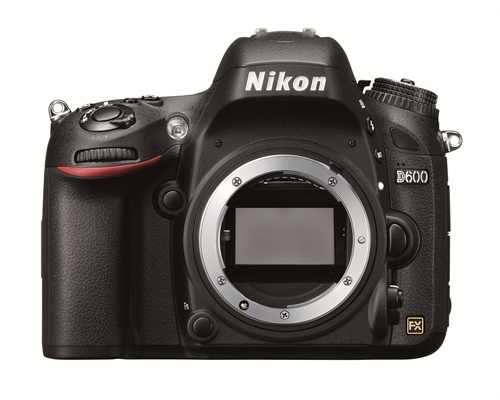
We can already say for sure that this is a fundamentally new sensor, and not the one we saw in the Nikon D3x. It is stated that the situation with noise and dynamic range has been improved.

Sensor Nikon D600
The Nikon D600 autofocus system uses a Nikon Multi-CAM4800 phase detection sensor with 39 points, 9 of which are cross-type. Sensor sensitivity reaches -1 EV (ISO 100, 20 °C/68 °F). All sensor points remain functional when using lenses with apertures up to f/5.6. When using lenses with lower aperture ratios, some points become impossible to use. However, several points in the very center of the frame work even with f/8 lenses.

Location of the AF point area in the viewfinder
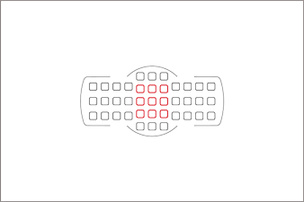
Sensors that remain operational with f/5.6 lenses (the cross ones are highlighted in red)

Sensors that remain operational with lenses faster than f/8 (the cross ones are highlighted in red)

Sensors that remain operational with f/8 lenses (the cross ones are highlighted in red)

Choice of 11 sensors out of 39
Naturally, such useful functions as 3D tracking (keeping the subject in focus even when it moves in the frame) and contrast autofocus when shooting video and in Live View have been preserved.
An RGB exposure sensor with a resolution of 2016 pixels is responsible for the correct operation of exposure metering. Thanks to it, the camera itself is able to identify typical scenes and introduce some exposure correction. Also, data from the exposure sensor is used to track the subject during 3D tracking.

Nikon D600 shutter
The Nikon D600 shutter cuts shutter speeds from 30 s to 1/4000 s. The declared shutter life is 150,000 frames. The shutter design uses a system to reduce power consumption when open for a long time (for example, when shooting video). Thanks to this, on a single battery charge (lithium-ion battery EN-EL15), you can record up to 60 minutes of video or shoot up to 600 frames (according to the manufacturer based on CIPA standards).
Since we're talking about video shooting, it's time to talk about it in more detail. Full HD (1080p) movies can be shot at 30p, 25p, and 24p frame rates, while 720p movies can be shot at 60p, 50p, and 25p frame rates. The maximum length of a Full HD video is approximately 29 minutes 59 seconds. Full HD (1080p) video recording is possible in FX and DX formats. At the same time, the HDMI output can record an uncompressed video stream without service information in resolutions up to 1080p.

You can frame your frame using either a 3.2-inch display with a resolution of 921,000 pixels or an optical viewfinder based on a glass pentaprism. It provides 100% frame area coverage at x0.7 magnification. When sighting in Live View mode, you can use an electronic level that shows the position of the camera relative to the vertical and horizontal axes. It seems that this year not a single premiere can do without this function.
Separately, additional functions should be noted, such as interval shooting with the ability to automatically combine captured frames into a video and HDR shooting.
The captured frames are saved to SD flash drives. Both SDHC and SDXC are supported.

The body is made of magnesium alloy and has slightly smaller dimensions than its predecessor Nikon D700.

Nikon D600 will be compatible with the WU-1b Wi-Fi module. Its use will allow you not only to copy photos from flash drives wirelessly, but also to control the camera using smartphones. This innovation also did not bypass Nikon.
And finally, the question of price: contrary to rumors circulating online last week, the cost of the camera turned out to be relatively high. For Russia it was announced at the level of 89,990 rubles.
Review of the Nikon D600 full-frame digital SLR camera

The release of the Nikon D600 full-frame digital SLR camera (DSLR), equipped with a 24 megapixel CMOS matrix (35.9 x 24.0 mm) and a 3.2-inch screen, took place in September 2012. The new Nikon D600 was released after the D800 and is also addressed to amateur photographers. On the one hand, the D600 can be seen as an "enhanced" full-frame (SLR) D7000, or as a "simplified" D800 and D4 (to a lesser extent) - both are fair.

The standard ISO range of 100-6400 expands to equivalent ISO 50-25.600 and allows faster shutter speeds to capture fine image detail with minimal noise.
Also impressive is the ability to transmit uncompressed FullHD 1080p video (30, 25 or 24 frames per second) using the HDMI port. In addition, a microphone jack for an external microphone and a headphone jack for monitoring audio in movie mode make the D600 very camera-friendly.

The D600 has two memory cards to accommodate two SD cards with the ability to record simultaneously, and they are also very convenient to use as “backup” options in case of overflow, or as separate places for storing JPEG / RAW, or for storing video; SDXC and UHS-I compatible.
To create a horizontally level frame, the D600 features a two-axis electronic virtual horizon.
The Nikon D600 is compatible with AF NIKKOR lenses, including G and D mount lenses (with some limitations on PC lenses) and DX (using DX 24 x 16 1.5x), as well as AI-P NIKKOR lenses.
Wireless transmission is handled by the optional WU-1b Nikon Mobile Adapter, which allows you to share images directly from the D600 to a smartphone or tablet, or control the D600 remotely using a smart device.
Thus, the compact, lightweight and durable D600, measuring 141 x 113 x 82 mm and weighing 760 g (without batteries) with a magnesium alloy top and back, is a well-built, ergonomic camera with many options for shooting in different conditions and creating high quality images.
So, in terms of design and user interface, the D600 successfully combines accessibility and functionality.

- 24.3MP Full-frame CMOS sensor (vs. 36.3MP CMOS of the D800).
- 10.5MP DX-format Crop mode (vs. 15.3-megapixel).
- 39-point AF system with 9 cross-type sensors (versus 51-point with 15 cross-type sensors).
- Autofocus sensor sensitivity down to -1EV (up from -2EV).
- Maximum continuous shooting at 5.5 fps. in FX mode (versus 4).
- RGB TTL exposure metering sensor with a resolution of 2016 pixels (up from 91000 pixels).
- 2 slots for SD cards (compared to CF + SD).
- There is no aperture control during video recording (the D800's "Power Aperture" function using the Fn + Preview buttons).
- The shutter is rated for 150,000 cycles (versus 200,000).
- The top and back panels of the case are made of magnesium alloy, the front plate is polycarbonate (the D800 case is completely made of magnesium alloy, except for moving parts).
- USB 2.0 interface (versus USB 3.0).
We wish you creative success!
In the world Photo
Saturday, September 15, 2012
Nikon D600 full-frame SLR camera - the brilliance and poverty of an amateur FF
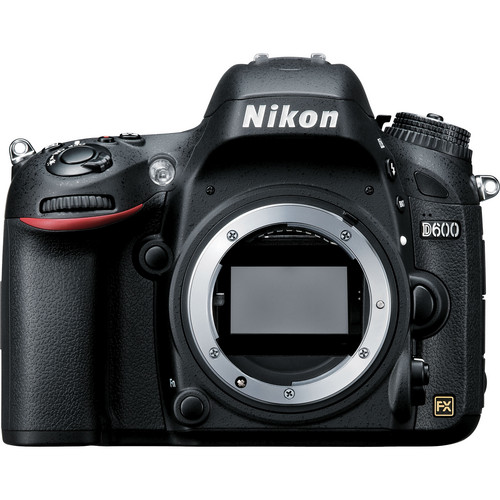
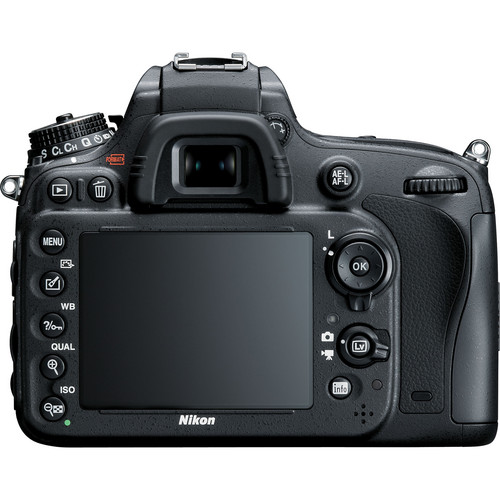
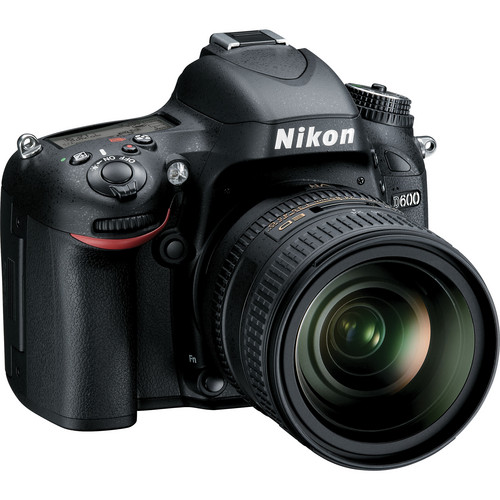
https://www.bhphotovideo.com/c/product/892428-REG/Nikon_D600_Digital_Camera_with.html
As you can easily see, the kit immediately fell in price by $100, already at the pre-order level and costs $2600.
So, what did Nikon present to us and who is this camera intended for?
First, the pros:
- full frame (FF)
- the cheapest FF on the market
- dimensions and weight are approximately at the level of the Nikon D7000
- there is a screwdriver
- there is an acceptable video
Actually, that's all.
Cons:
- price 2100 per carcass
- shutter speed range 30-1/4000 - like Nikon D5100
- X sync - 1/200 s - like Nikon D5100 (X-Sync: up to 1/250 sec (up to 1/320 sec in Auto FP) Nikon D7000)
Additionally:
they left USB 2.0, autofocus from the Nikon D7000, two memory card slots like the Nikon D7000, 10 MP in DX mode (to be honest, not enough).
Thus, we have before us a kind of hybrid from Nikon D5100, Nikon D7000 with a full-frame matrix.
Let us remind you that there is a full frame for the traveler. This is a carcass under 1 kg, lenses in a small assortment with prices of 1000-1500 and a weight of 500g or more, but this is a FULL frame.
What's on the market from Nikon for the traveler?
- light and cheap Nikon D5100 crop at a price of $500 body
- the most sophisticated Nikon D7000 crop at a price of $850 body
- full frame Nikon D600 for $2100 as a Nikon D5100/D7000 hybrid on FF
- full frame Nikon D800 for $3000
The price gap between the D800 and D600 is only 30% of the body price (and you need more lenses!), but the difference in quality and functionality is huge. In other words, if you need full frame and have the money to buy a Nikon D600 and full frame lenses, the difference in replacing the body with a D800 will be less than 30%.
If you have a fleet of DX format lenses, or inexpensive FF lenses, or a Nikon D7000 body, then switching to the Nikon D600 may turn out to be... very expensive and associated with new problems. Flash sync 1/200, shutter speed cut to 1/4000 - no comment. But what can be forgiven for the tiny and cheap Nikon D5100 causes irritation when we are talking about a camera that costs $2,100!
Verdict.
The Nikon D600 is designed for a very undemanding amateur and/or enthusiast who desperately needs a full frame but does not have the funds to purchase a Nikon D800.
After the most impatient people buy up the first batch, it’s hard to imagine who else will need this carcass at a price of $2,100.
It would be logical if the company decides to reduce the price by $400-700 after some time, so that the camera fills the niche of the rapidly falling Nikon D7000. In this case, this camera will simply “explode” the DSLR market and cause a mass migration of Nikon D7000 owners to Nikon D600 :)
Nikon D600 - budget full frame from Nikon
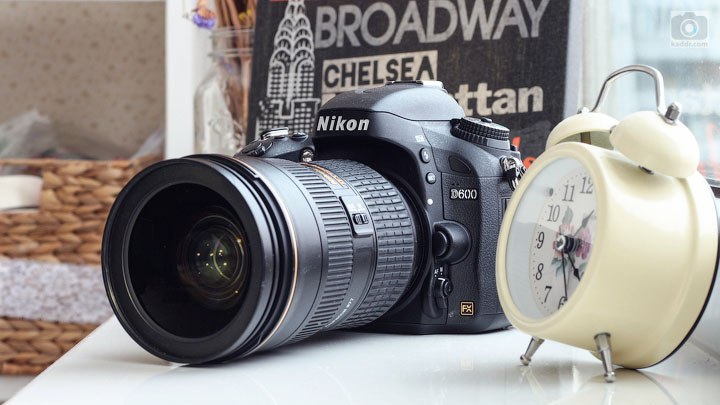
Nikonists have been waiting for a cheap “full frame” for years. After all, every second photographer is sure that it is a camera with a 24x36 mm sensor that will make his photographs masterpieces, and clients will line up for his services. This, of course, will not happen, but cameras with FX sensors do have their undeniable advantages. Therefore, owning such a DSLR is the “holy grail” that you should definitely strive for. The previous most affordable DSLR camera, Nikon D700, cost $3,000 at launch. Only photographers who already made a decent living from photography could afford such a sum. And these are only the costs of the “bodysuit” itself. Optics compatible with a full-frame sensor also cost quite a lot of money, with the exception of some inexpensive primes such as Nikkor AF 50mm f/1.8D, AF-S 50mm f/1.8G, AF-S 50mm f/1.4G. Therefore, purchasing such a photographic instrument was and remains only a dream for most amateur photographers. Fingers crossed, every photographer with Nikkor lenses in their case was waiting for the D600 announcement and pricing announcement. And here it is, Nikon D600. The official price tag is $2100. Those who were expecting a cost of about $1,500 were furiously indignant at Nikon, although it personally did not promise them anything. How this price is justified, we will look into in this review.
What will please you outside?
 The body of the Nikon D600 is made from magnesium alloy, but some polycarbonate is also used on the front panel.
The body of the Nikon D600 is made from magnesium alloy, but some polycarbonate is also used on the front panel. All this is topped with a sauce of all sorts of convenient rubber bands, buttons, levers and control dials. If they tell you that the D600 is a camera for housewives because of its small size compared to the Nikon D800, stay away from such people. In terms of dimensions, it is somewhere in the middle between the more compact D7000 and its older brother D800. Moreover, the depth of the case here is the same as in the D800, and even a little more than in the D700. The width and height are only a few millimeters smaller. The battery grip fits in your hand like a glove. Nikon says the D600 has good dust and water resistance, but we didn't have a chance to test it in a sandy desert or in heavy rain. But she survived the -15 frost quite successfully. If you don’t know how to handle photographic equipment in winter, be sure to read the relevant material on the website. On the back panel, under plastic protection, there is a 3.2-inch VGA display with wide viewing angles and excellent color rendition.
All this is topped with a sauce of all sorts of convenient rubber bands, buttons, levers and control dials. If they tell you that the D600 is a camera for housewives because of its small size compared to the Nikon D800, stay away from such people. In terms of dimensions, it is somewhere in the middle between the more compact D7000 and its older brother D800. Moreover, the depth of the case here is the same as in the D800, and even a little more than in the D700. The width and height are only a few millimeters smaller. The battery grip fits in your hand like a glove. Nikon says the D600 has good dust and water resistance, but we didn't have a chance to test it in a sandy desert or in heavy rain. But she survived the -15 frost quite successfully. If you don’t know how to handle photographic equipment in winter, be sure to read the relevant material on the website. On the back panel, under plastic protection, there is a 3.2-inch VGA display with wide viewing angles and excellent color rendition. Viewing pictures on this display is a pleasure. You can quickly determine the accuracy of the focus hitting the target and movement. The control wheels have stops to prevent accidental rotation and a tractor coating for better grip on your fingers. In addition to the mandatory PASM shooting modes, there are also 2 programmable ones for individual settings. The control and customization capabilities are approximately the same as in the D7000, that is, you can customize almost everything that might come to your mind. But what is missing is the use of the “OK” button on the selector to enlarge the image up to 100% in playback mode. Considering that this is a purely software feature, I think Nikon programmers will release firmware with changes in the near future. It’s convenient to assign the Fn key to change FX/DX modes and, with one touch, get one and a half times longer focal length when needed in a full-fledged RAW file.
Viewing pictures on this display is a pleasure. You can quickly determine the accuracy of the focus hitting the target and movement. The control wheels have stops to prevent accidental rotation and a tractor coating for better grip on your fingers. In addition to the mandatory PASM shooting modes, there are also 2 programmable ones for individual settings. The control and customization capabilities are approximately the same as in the D7000, that is, you can customize almost everything that might come to your mind. But what is missing is the use of the “OK” button on the selector to enlarge the image up to 100% in playback mode. Considering that this is a purely software feature, I think Nikon programmers will release firmware with changes in the near future. It’s convenient to assign the Fn key to change FX/DX modes and, with one touch, get one and a half times longer focal length when needed in a full-fledged RAW file.
The left side is dotted with a scattering of entrances and exits. Here you will find mini USB, HDMI, an input for the GPS module and remote control, a port for an external microphone and even headphones. The latter is a step towards popularizing video shooting using SLR cameras. Constantly monitoring the sound level and possible interference is critical to obtaining high-quality video material. 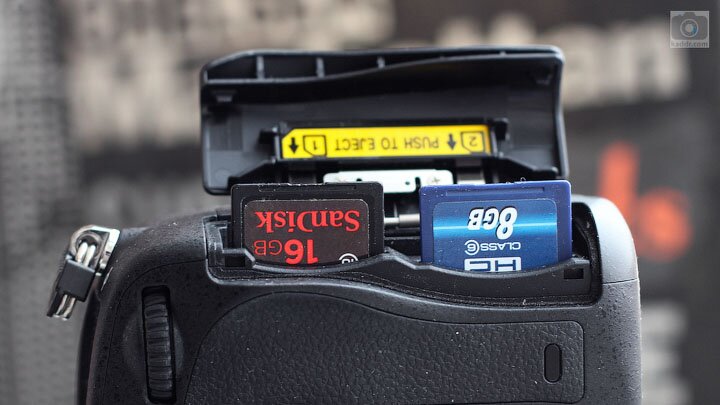
The Nikon D600 has two slots for SD memory cards. You can write JPEG files to one of them, and RAW files to the second. Or duplicate all the information if certain frames are incredibly important and you doubt the reliability of the memory cards.
What's under the hood?
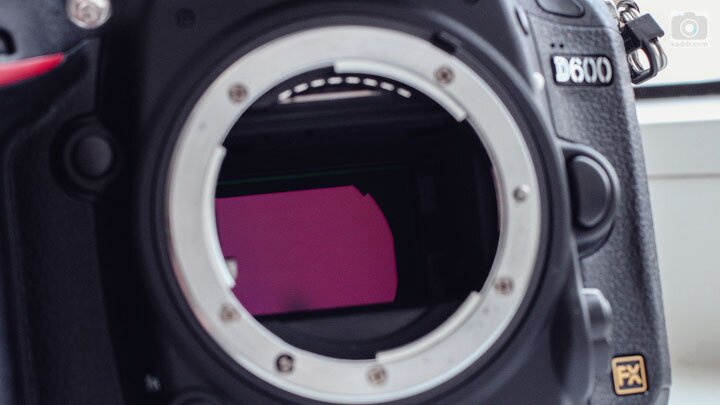 The heart of the Nikon D600 is a 35.9x24 mm sensor with a resolution of 24 million pixels.
The heart of the Nikon D600 is a 35.9x24 mm sensor with a resolution of 24 million pixels.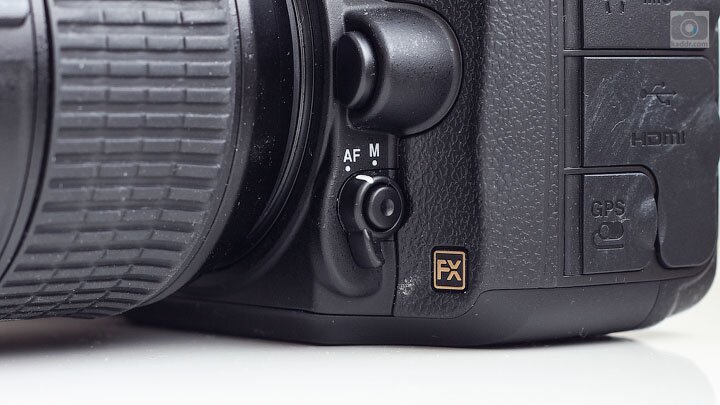 Sensitivity range – from 100 to 6400 units. In extended mode - from 50 to 25600. The latest generation Expeed 3 processor is responsible for processing data from the matrix. This combination of components allows the Nikon D600 to occupy the top positions in the ranking of cameras in its price range with the highest detail and at the same time low noise levels at high ISO values. You can safely set Auto ISO with a limit of ISO to 6400, a shutter speed of 1/160–1/200 and use exclusively aperture priority mode. In the Auto ISO setting, you can set the shutter speed ratio relative to the current focal length. This is incredibly convenient when using zoom lenses. Up to a sensitivity of 1600, you are unlikely to ever think about noise reduction at all. 3200–6400 can also be safely used, but it’s still better to use it exclusively in RAW. It is worth saying that noise reduction and sharpening are adjusted when shooting in JPEG in such a way that they are always in harmony and agreement with each other. The autofocus system of the Nikon D600 was inherited from the D7000.
Sensitivity range – from 100 to 6400 units. In extended mode - from 50 to 25600. The latest generation Expeed 3 processor is responsible for processing data from the matrix. This combination of components allows the Nikon D600 to occupy the top positions in the ranking of cameras in its price range with the highest detail and at the same time low noise levels at high ISO values. You can safely set Auto ISO with a limit of ISO to 6400, a shutter speed of 1/160–1/200 and use exclusively aperture priority mode. In the Auto ISO setting, you can set the shutter speed ratio relative to the current focal length. This is incredibly convenient when using zoom lenses. Up to a sensitivity of 1600, you are unlikely to ever think about noise reduction at all. 3200–6400 can also be safely used, but it’s still better to use it exclusively in RAW. It is worth saying that noise reduction and sharpening are adjusted when shooting in JPEG in such a way that they are always in harmony and agreement with each other. The autofocus system of the Nikon D600 was inherited from the D7000.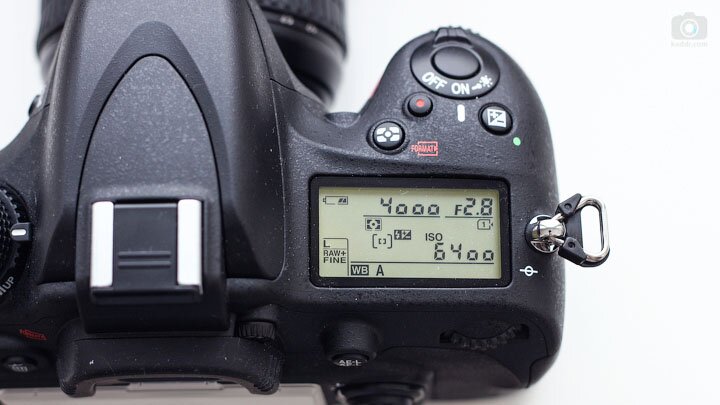 On the one hand, this is good - the seven thousandth has a very good focusing module. It has 39 points, of which 9 are cross-shaped. But there is one detail - this module is designed for cropped SLR cameras. What does this mean? The fact that the entire field for selecting focus points is concentrated in the central part of the frame. Because of this, it is problematic to aim at the model’s eyes without moving the camera itself if tight framing is used. How critical this is, only you can judge. Many people use exclusively the central focus point, then lock the focus with a special button and frame. Autofocus speed and accuracy were no problem during testing with the Nikkor AF-S 24-70mm f/2.8G, Nikkor AF 50mm f/1.8D, and Nikkor AF-S 50mm f/1.8D lenses. On the other hand, with an autofocus module originally designed for FX cameras, it would be even better. The overall operating speed and rate of fire deserve special attention. With a fairly large sensor resolution, the D600 shoots at 5.5 frames per second, which is more than its big brother, the D800, can achieve. At the same time, up to 15 frames in a series are placed in the memory buffer when shooting in RAW and up to 30 in JPEG. The most noticeable drawback of the Nikon D600, which every more or less attentive photographer noticed in the press release, is the minimum shutter speed of 1/4000. This is critical for owners of super-fast lenses with f/1.2–f/1.8 apertures. In sunny weather, in this case, the minimum ISO 50 and shutter speed 1/4000 may not be enough and you will have to close your favorite aperture. On the other hand, calculate for yourself how many frames you take per year at these values. There is a problem, but its significance is clearly exaggerated. Among the interesting features, it is worth noting interval and time-lapse photography for creating impressive Time Lapses, advanced capabilities for creating HDR images, Active D-Lighting to increase the dynamic range of images and vignetting correction.
On the one hand, this is good - the seven thousandth has a very good focusing module. It has 39 points, of which 9 are cross-shaped. But there is one detail - this module is designed for cropped SLR cameras. What does this mean? The fact that the entire field for selecting focus points is concentrated in the central part of the frame. Because of this, it is problematic to aim at the model’s eyes without moving the camera itself if tight framing is used. How critical this is, only you can judge. Many people use exclusively the central focus point, then lock the focus with a special button and frame. Autofocus speed and accuracy were no problem during testing with the Nikkor AF-S 24-70mm f/2.8G, Nikkor AF 50mm f/1.8D, and Nikkor AF-S 50mm f/1.8D lenses. On the other hand, with an autofocus module originally designed for FX cameras, it would be even better. The overall operating speed and rate of fire deserve special attention. With a fairly large sensor resolution, the D600 shoots at 5.5 frames per second, which is more than its big brother, the D800, can achieve. At the same time, up to 15 frames in a series are placed in the memory buffer when shooting in RAW and up to 30 in JPEG. The most noticeable drawback of the Nikon D600, which every more or less attentive photographer noticed in the press release, is the minimum shutter speed of 1/4000. This is critical for owners of super-fast lenses with f/1.2–f/1.8 apertures. In sunny weather, in this case, the minimum ISO 50 and shutter speed 1/4000 may not be enough and you will have to close your favorite aperture. On the other hand, calculate for yourself how many frames you take per year at these values. There is a problem, but its significance is clearly exaggerated. Among the interesting features, it is worth noting interval and time-lapse photography for creating impressive Time Lapses, advanced capabilities for creating HDR images, Active D-Lighting to increase the dynamic range of images and vignetting correction.
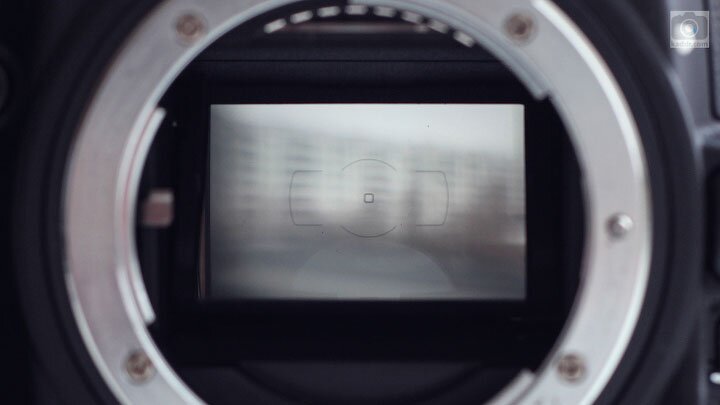 Nikon D600 is packed with everything that demanding videographers might need - Full HD video recording up to 30 frames per second, high bitrate, manual settings, non-compression HDMI output, microphone and headphone input, manual volume control.
Nikon D600 is packed with everything that demanding videographers might need - Full HD video recording up to 30 frames per second, high bitrate, manual settings, non-compression HDMI output, microphone and headphone input, manual volume control.
The bug with the inability to set the aperture in Live View seems to have been inherited by the D600. To correct the aperture, you have to turn Live off/on or switch to photo mode and back to video. It’s infuriating beyond belief, but what we have is what we have. We really hope that this will be fixed in the next firmware.
Nikon D600 video review
(Click on the upper right corner to view in full screen mode)
Tips for choosing a full-frame camera: review of current models


Full-frame DSLR cameras are now at the peak of their popularity. There are several reasons for this. On the one hand, traditional APS-C have a strong competitor - mirrorless cameras, which are superior to DSLR cameras in terms of characteristics such as price and compactness.
On the other hand, more and more models of SLR cameras are moving towards the professional segment, receiving the filling of older models, including a full-frame matrix, becoming cheaper and moving from the category of purely professional cameras to the more widespread category of advanced cameras for amateur photographers.
A synonym for a top-end camera is the presence of a full-frame full-frame matrix (FF) , about which many people only know that FF is good.
Today we will try to answer popular questions from amateur photographers about full-frame cameras and help you navigate the current models.
The matrix in the camera is the case when size matters. The smallest matrices are usually used in mobile phones, a little larger (1/2.3) - in point-and-shoot cameras and camera phones, even larger ones (Micro 4/3, 1", APS-C) - in mirrorless cameras, APS-C (25.1x16. 7 mm) - in conventional SLR cameras, full-frame (36x24 mm) - in older models of SLR cameras. The full-frame sensor gets its name because it has the same dimensions as a full-frame 35mm film. Therefore, the focal length on lenses is usually indicated “in 35 mm equivalent.”
Low noise at high ISO values, shallow depth of field, wide dynamic range, smooth transitions in midtones - this is what (and in general everything) will affect the quality of photography when switching to an FF camera. Strictly speaking, a camera with a full-frame sensor is needed by those who want to use professional fast lenses more efficiently and shoot at high ISO values. A full-frame sensor is not one big plus.
Compared to cameras with APS-C sensors, FF cameras are much inferior in shooting speed. Also, sensors with a crop factor greater than one will be more convenient for working with telephoto lenses.
In addition to size, the difference between a full-frame and a crop sensor is the increased frame space. The crop sensor increases the focal length in proportion to its crop factor. Shooting with an APS-C camera (crop factor 1.5) with a 50 mm lens, we will get photos that look like they were taken with a 75 mm lens. On the other hand, a full-frame sensor does not crop the image, which means that with the same 50 mm lens you can shoot landscapes and fit a much larger lens into the frame without using wide-angle lenses.
Before purchasing an FF camera, you should carefully study the list of compatible lenses, their prices, and remember that a full-frame camera is very demanding on the quality of the optics. Paired with a mid-price lens that blurs or darkens the image at the edges, it will not be able to reveal even part of the potential of a large matrix. And good optics cost a lot of money, from $400 to several thousand.
Fast prime lenses, including wide-angle ones, work great on full-frame cameras. Alternatively, you can start by purchasing a budget 50mm F/1.8 for the FF camera mount. But you will have to give up the available zooms, as well as a number of wide-angles - 10-22, 10-20, 11-16, 10-24.
In the entire history of digital full-frame cameras, only a few dozen models have gone on sale. Moreover, only three companies produce such equipment for the mass buyer - Canon, Nikon, Sony. The last full-frame Kodak camera was released in 2004, and the Pentax model shown in 2001 never went on sale, and not everyone can afford Leica cameras: the average price for a Leica M9 without a lens is 140 thousand rubles.
Canon EOS 5D Mark III and Canon 6D
2012 brought an update to all existing full-frame cameras, including the legendary Canon 5D series.
Field review of the affordable full-frame Nikon D600 camera
The Nikon D600 DSLR camera came out a little less than two weeks ago and has already made a lot of noise - along with the later Canon EOS 6D model, the camera represents a new generation of affordable full-format cameras. We took the latest product at Photokina 2012 and shot with it in Germany and the Netherlands.
Rumors that Nikon is preparing a cheaper full-format SLR camera have been circulating for a very long time, almost since 2010. And only at the beginning of this summer the information began to receive confirmation: first, photographs of parts of the case, and then photographs of the entire device, appeared online. This early leak is partly due to the fact that the D600 is produced at the company's plant in Thailand. Prior to this, Nikon full-format cameras were assembled only in factories in Japan.
The expected price of a full-format camera, according to preliminary data, was to be $1,500. From the very beginning, this information was pleasant, but implausible. And indeed, the official starting price of the new product turned out to be higher; for the “carcass” you will have to pay $2100. Let's remember the prices of other modern full frames: Nikon D800 will cost $3000, Canon EOS 5D Mark III will cost $3500, Sony A99 costs $2800. Thus, the cost bar for a full-format camera has been greatly reduced. Without a doubt, this is the camera that everyone has been waiting for a very long time. A good modern full-format sensor, good autofocus and continuous shooting at a reduced price will ensure a trouble-free existence for the model for the next couple of years. It is worth noting that the main competitor, Canon, released the EOS 6D model, its price is the same $2100.
Technical characteristics of Nikon D600:
- full-format CMOS sensor, 24.3 MP;
- screen: 3.2″ TFT LCD, 921,000 pixels;
- viewfinder: pentaprism, 100% frame coverage;
- image size: 6016×4016 pixels;
- recording formats: NEF (14-bit RAW), NEF (12-bit RAW), JPEG;
- EXPEED 3 image processing system;
- ISO 50—25600;
- shutter speed range: 1/4000—30 s, BULB mode;
- Burst rate: 5.5 fps;
- built-in flash: guide number 12;
- synchronization at shutter speeds up to 1/200 s;
- Battery: Li-ion battery EN-EL15 (1900 mAh);
- support for SD/SDHC/SDXC memory cards;
- dimensions: 141×113×82 mm;
- weight with battery: 760 g.
Inside the camera is a newly developed sensor, which is recognized by the authoritative resource DxOMark as the No. 2 full-format sensor in the world. The first one still houses the 36-megapixel Nikon D800 matrix. But in terms of picture quality at high ISOs, the Nikon D600 model is superior to its “big brother”. The camera has an EXPEED 3 processing module, and the burst rate is 5.5 frames/s - not bad for a 24-megapixel camera. Unfortunately, even if you connect an external battery grip, the burst rate will not increase.
Surprisingly, Nikon engineers managed to pack a full-frame sensor into a very compact body. The camera is even smaller than the D300s with an APS-C sensor. Here's how the new product looks in comparison with the older model Nikon D800:


